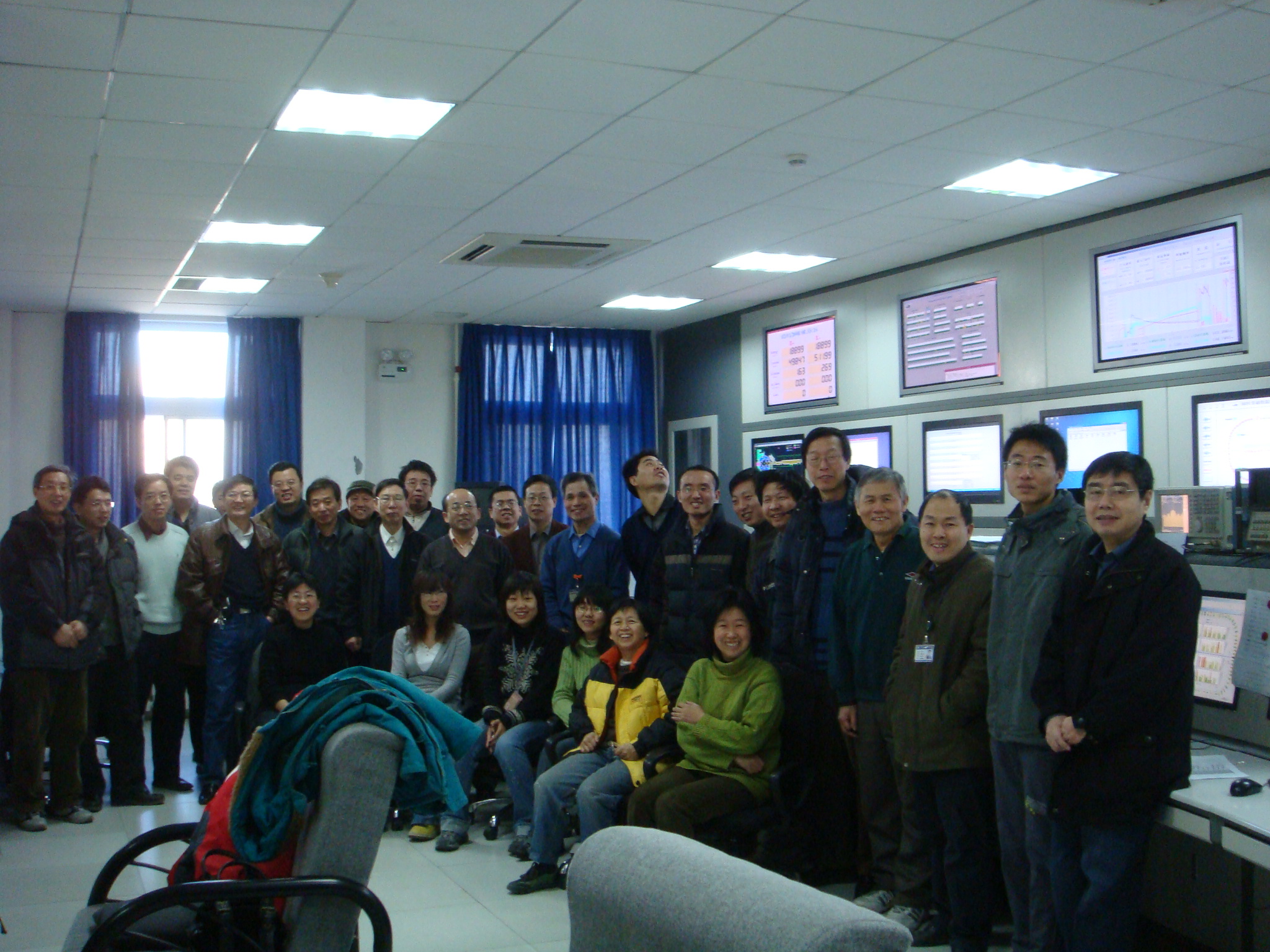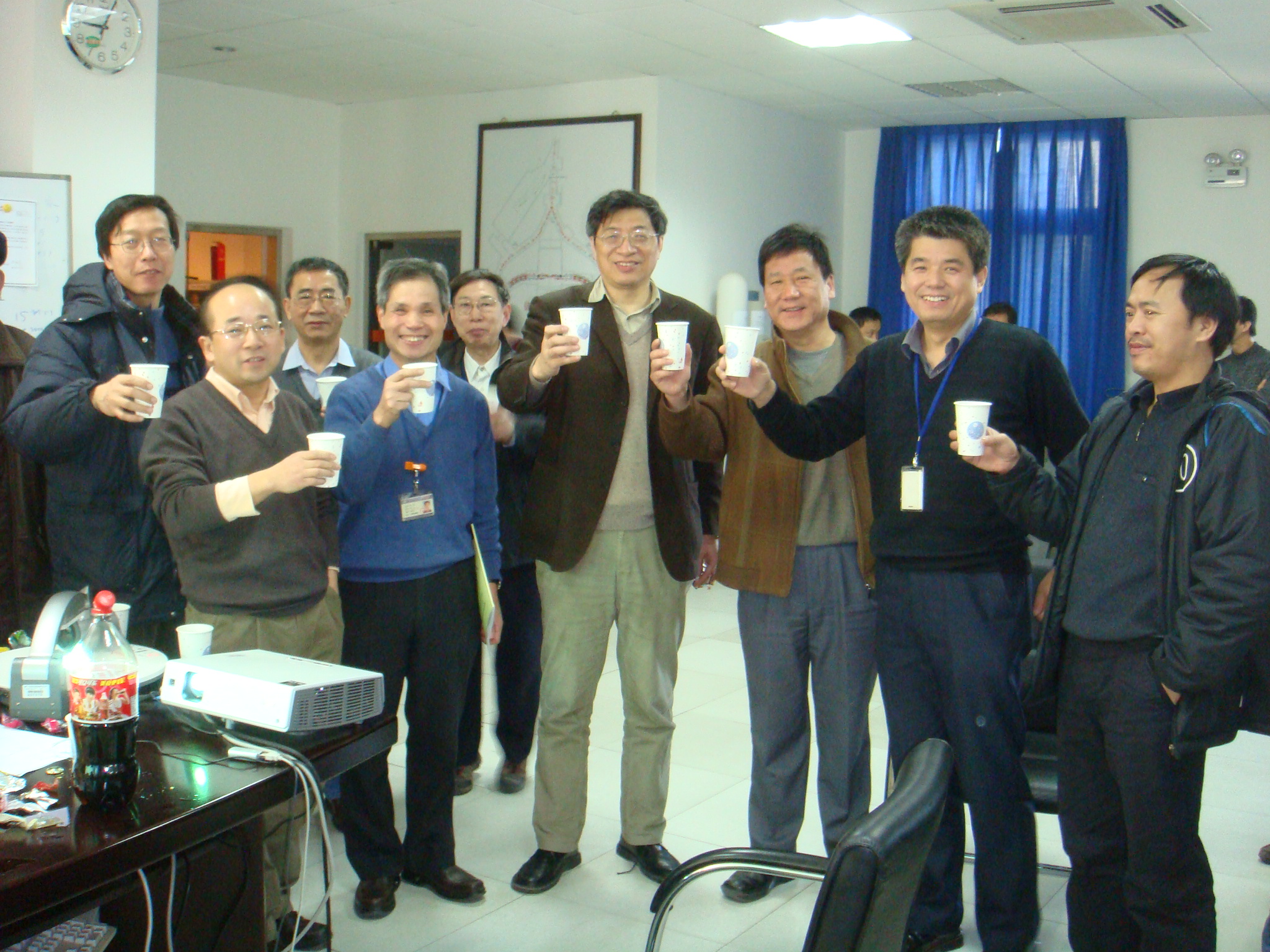BEPC & BEPCII
Second phase commissioning of the BEPCII completed with success
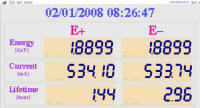 At 8:26 on February 1, 2008, right before the completion of the second phase commissioning of the BEPCII, the collision of the electron and positron beams of 530mA by 530mA was realized.
At 8:26 on February 1, 2008, right before the completion of the second phase commissioning of the BEPCII, the collision of the electron and positron beams of 530mA by 530mA was realized.
The commissioning of the BEPCII was planed in three phases. The phase one commissioning, which is with conventional magnets in the interaction region (IR), was carried out from Nov. 12 2006 to August 3, 2007. In this phase, 100mA by 100mA beam collision was achieved with by*=5 cm, while the estimated luminosity reached the level of BEPC. Two rounds of synchrotron radiation operation were arranged during the period.
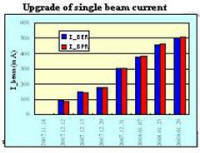 In the summer of 2007, the superconducting magnets SIM’s and new vacuum chambers were installed into the IR. The second phase commissioning was started from October 24, 2007. Here are the milestones of this phase of commissioning: the first electron beam was stored on Oct. 25, while the first positron beam stored on Oct. 31; the first e+e- collision was realized with by*=1.5 cm on Nov. 18. On December 30, electron and positron beams of 300mA were stored simultaneously in each ring and 2′500mA e+-e- collision was realized on Jan. 29 while the luminosity measured by the two zero-degree luminosity detector is higher than 1′1032cm-2s-1。
In the summer of 2007, the superconducting magnets SIM’s and new vacuum chambers were installed into the IR. The second phase commissioning was started from October 24, 2007. Here are the milestones of this phase of commissioning: the first electron beam was stored on Oct. 25, while the first positron beam stored on Oct. 31; the first e+e- collision was realized with by*=1.5 cm on Nov. 18. On December 30, electron and positron beams of 300mA were stored simultaneously in each ring and 2′500mA e+-e- collision was realized on Jan. 29 while the luminosity measured by the two zero-degree luminosity detector is higher than 1′1032cm-2s-1。
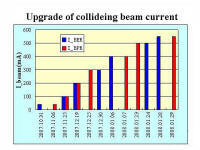 The injector linac has passed acceptance test organized by CAS with positron injection rate higher than its design value of 50mA/min. in the storage ring and 100mA/min. in maximum. The response matrix technique has been applied and, as a result, the measured working points and Twiss parameters were well agreed with the design values. Optimization of the injection and RF parameters and application of the transverse feedback system made the steady increment of beam currents in the rings possible. By scanning the tunes, coupling and orbit at the interaction point, the luminosity has been increased day by day. In the meantime, the beam instabilities and vacuum chamber heating as well as background caused by particle losses were intensively observed and studies along with the increase of the beam current. The parasitic operation with a synchrotron radiation wiggler imosed was successfully tested.
The injector linac has passed acceptance test organized by CAS with positron injection rate higher than its design value of 50mA/min. in the storage ring and 100mA/min. in maximum. The response matrix technique has been applied and, as a result, the measured working points and Twiss parameters were well agreed with the design values. Optimization of the injection and RF parameters and application of the transverse feedback system made the steady increment of beam currents in the rings possible. By scanning the tunes, coupling and orbit at the interaction point, the luminosity has been increased day by day. In the meantime, the beam instabilities and vacuum chamber heating as well as background caused by particle losses were intensively observed and studies along with the increase of the beam current. The parasitic operation with a synchrotron radiation wiggler imosed was successfully tested.
Now the machine is switched to the dedicated synchrotron radiation mode. The BEPCII will be operated as a light source for users till March 26, 2008. The BESIII detector will be rolled into the interaction region during the following two months. The third phase commissioning of the BEPCII will be started in June together with BESIII detector. Its target luminosity is 30% of the design specification, i.e. 3′1032cm-2s-1. Success of the second phase commissioning has given us a confidence to reach this very challenging goal.
